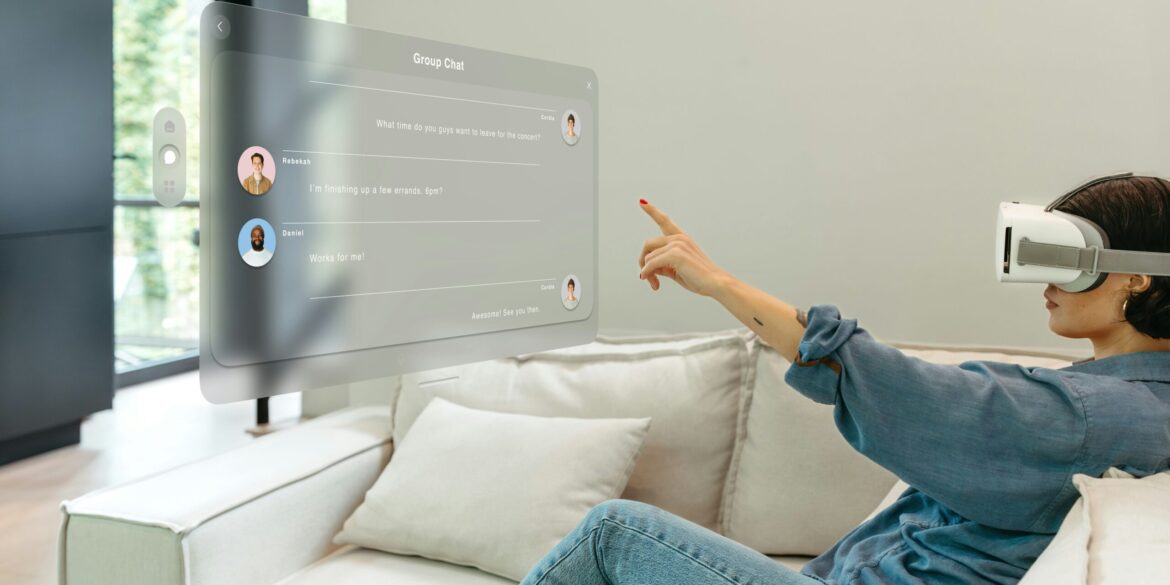The rapid evolution of technology is transforming the way we live, and at the forefront of this change are smart homes. In 2025, smart home technology has not only gained mainstream acceptance, but it is also becoming a standard expectation for new homes and real estate listings. From enhancing security and energy efficiency to improving comfort and convenience, smart homes are setting the new standard for modern living.
The Rise of Smart Home Devices
Smart homes are increasingly powered by a range of devices connected through the Internet of Things (IoT), allowing homeowners to control and monitor their home from anywhere via smartphones and voice-controlled assistants. Major tech companies such as Google, Amazon, and Apple have played a pivotal role in making these devices mainstream.
Voice-controlled assistants like Amazon’s Alexa, Google Assistant, and Apple’s Siri have become staples in households, allowing homeowners to control lighting, temperature, entertainment systems, and even household appliances using just their voice. The ease of control and automation that these systems offer have revolutionized home management, making everyday tasks simpler and more efficient.
One of the most popular features in smart homes today is the smart thermostat. Devices such as the Nest Learning Thermostat and Ecobee smart thermostats learn user behavior and adjust the temperature accordingly. By doing so, these devices optimize energy consumption, resulting in lower energy bills while also contributing to sustainability efforts.
Smart Security: A Top Priority for Homebuyers
In an era where personal security is a top concern for homeowners, smart security systems have gained immense popularity. The advent of video doorbells like Ring and Google Nest Hello, along with advanced smart locks, security cameras, and motion sensors, have provided homeowners with greater peace of mind and control over their home security.
Smart security systems enable real-time monitoring from anywhere, allowing users to see who is at the door or check the security cameras at any time. These systems are often equipped with motion detection and facial recognition technology, which enhance security and ensure that only authorized individuals can access the home.
Furthermore, many smart security systems integrate with home automation hubs like Amazon Alexa or Google Assistant, allowing users to remotely lock or unlock doors, arm or disarm security systems, and receive instant alerts on their smartphones in case of a security breach.
Home Automation and Energy Efficiency
Smart homes are also contributing to a more sustainable future by increasing energy efficiency. Smart lighting systems, for example, enable homeowners to control the brightness and scheduling of lights throughout the home, ensuring that lights are only on when needed. Energy-efficient smart bulbs, such as those offered by Philips Hue, also last longer than traditional bulbs and consume less energy.
Smart appliances like refrigerators, washing machines, and dishwashers have also become commonplace in modern homes. These devices are designed to consume less energy, optimize their functions, and provide data to homeowners about their usage patterns. For instance, a smart refrigerator can notify homeowners when they’re running low on certain groceries, while a smart washer might offer the ability to schedule laundry cycles to run during off-peak energy hours, saving both money and resources.
Moreover, smart homes offer greater control over heating and cooling. The integration of smart thermostats, connected HVAC systems, and window blinds that automatically adjust based on temperature and sunlight allows homeowners to minimize energy usage without sacrificing comfort. This level of control is particularly valuable in areas with extreme weather, where heating and cooling can represent a significant portion of household energy costs.
The Role of AI in Smart Home Evolution
As artificial intelligence (AI) continues to improve, so does the intelligence of smart home devices. In 2025, AI is driving personalization in smart homes, allowing devices to adapt more seamlessly to users’ preferences and daily routines.
For instance, smart speakers like Amazon Echo and Google Home now integrate with other smart devices and use AI to learn users’ habits and preferences. Over time, these devices can anticipate needs, such as adjusting the thermostat before a user arrives home or dimming the lights at a specific time based on previous behavior.
AI is also enhancing home security systems. Advanced security cameras equipped with AI-driven facial recognition can identify family members, pets, and even potential intruders. Smart security systems can analyze unusual patterns in activity and alert homeowners of potential threats, increasing the overall safety of the home.
Smart Homes as a Selling Point for Homebuyers
In 2025, smart home technology is becoming a must-have for homebuyers. As more people prioritize convenience, sustainability, and security, the demand for homes with smart features continues to rise. Real estate listings are increasingly including descriptions of smart home systems, and many buyers now expect these features to be standard in new homes.
For builders and developers, incorporating smart technology into homes is no longer optional—it’s essential. Many new residential developments are designed with smart home infrastructure built in from the ground up. In fact, many new homes are marketed as “smart homes” with packages that include connected security systems, thermostats, lighting, and voice assistants.
Research from the National Association of Home Builders (NAHB) indicates that nearly 40% of new homes in the U.S. in 2025 are equipped with at least one form of smart technology, with home security systems and smart thermostats being the most popular features. This growing demand is a clear indication that smart homes are not just a trend—they are the future of homeownership.
The Future of Smart Homes: What’s Next?
The smart home market is expected to continue growing, with innovations on the horizon that will make homes even more connected, intelligent, and responsive. In the future, we may see more integration of smart devices, where everything from your refrigerator to your oven to your front door can be controlled seamlessly through a single app or voice command.
Additionally, with the rise of 5G technology, the speed and reliability of smart home devices will improve, enabling real-time communication and control. As AI continues to advance, smart homes will become even more intuitive, predicting users’ needs before they are even expressed.
For those looking to invest in the future of living, smart homes present an opportunity to not only enhance their daily lives but also increase the value of their property. Homes with smart features are likely to see higher resale values as they cater to the preferences of modern buyers.
Conclusion
Smart home technology has evolved from a luxury to a necessity in the modern housing market. In 2025, it’s clear that smart homes are here to stay. From improved security to energy efficiency, and from personalized experiences to increased home value, the benefits of smart homes are undeniable. As the technology continues to evolve, homeowners can expect even more advanced features that will further revolutionize the way we live.

